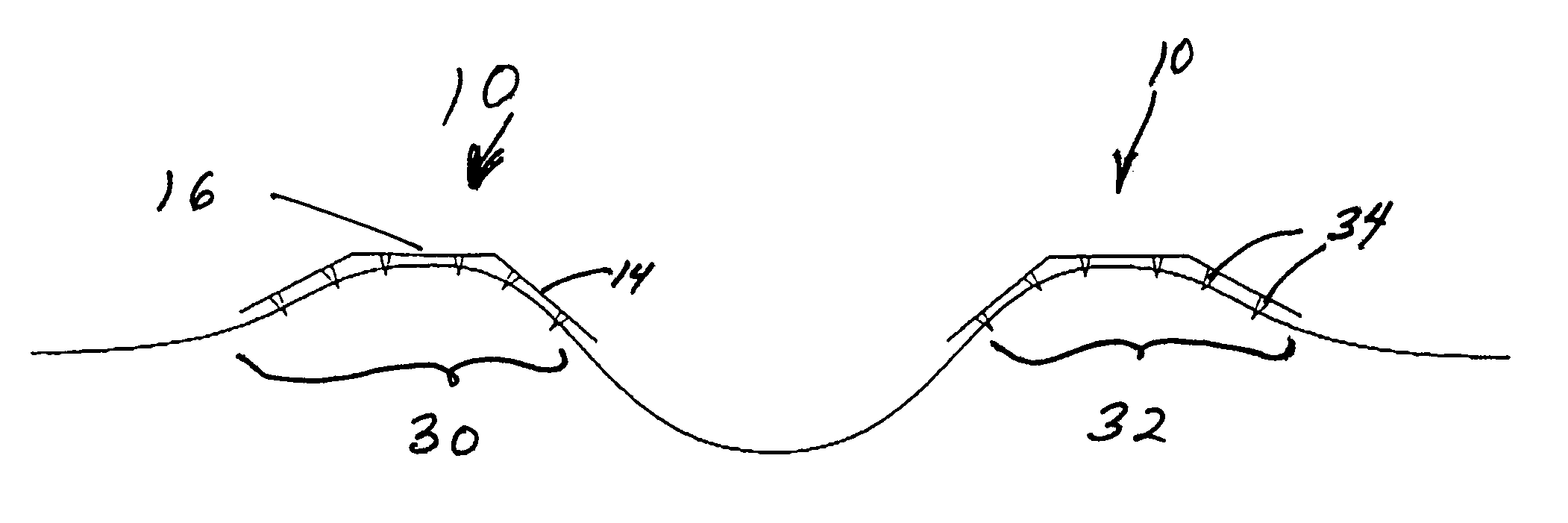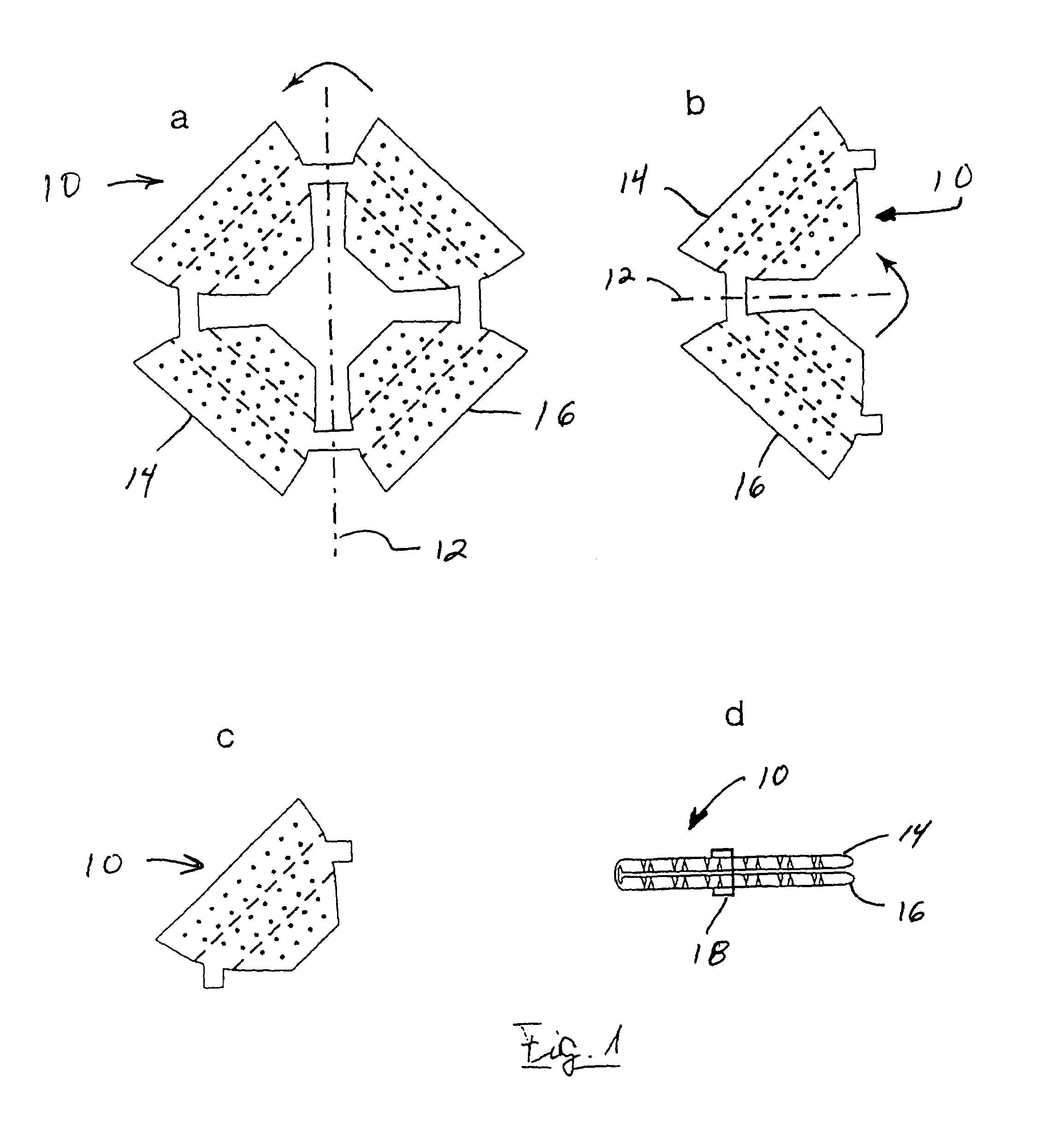Microcontact structure for neuroprostheses for implantation on nerve tissue and method therefor
a microcontact structure and neuroprosthesis technology, applied in the field of implantable microcontact structures for neuroprosthesis, can solve the problems of not having mechanisms to carry out, no devices and methods provided for microcontact structure explantation, and inability to minimise the spacing between microelectrodes
- Summary
- Abstract
- Description
- Claims
- Application Information
AI Technical Summary
Benefits of technology
Problems solved by technology
Method used
Image
Examples
Embodiment Construction
[0021]An advantageous device comprising a spatially adaptive microcontact structure for neuroprostheses for implantation at nerve tissue embodies the feature that the microcontact structure can be produced as a planar, two-dimensional structure using current methods for producing microcontact structures (for example on a silicon, silicon or polyimide base (see FIGS. 1–4)).
[0022]In the embodiments depicted in FIG. 1a and 1b a two-dimensional microcontact structure is portrayed. This structure comprises two regions, items 14 and 16, that are foldable about and axis 12. FIG. 1c depicts a simpler embodiment which depicts a microcontact structure which capable of being rolled. Accordingly, these embodiments relate to a microcontact structure that can be folded or rolled very compactly in a second step for transportation purposes in a surgical procedure. Subsequent to its delivery to the implantation point, the structure can not only be unfolded planarly in a third step but may be folded ...
PUM
 Login to View More
Login to View More Abstract
Description
Claims
Application Information
 Login to View More
Login to View More - R&D
- Intellectual Property
- Life Sciences
- Materials
- Tech Scout
- Unparalleled Data Quality
- Higher Quality Content
- 60% Fewer Hallucinations
Browse by: Latest US Patents, China's latest patents, Technical Efficacy Thesaurus, Application Domain, Technology Topic, Popular Technical Reports.
© 2025 PatSnap. All rights reserved.Legal|Privacy policy|Modern Slavery Act Transparency Statement|Sitemap|About US| Contact US: help@patsnap.com



